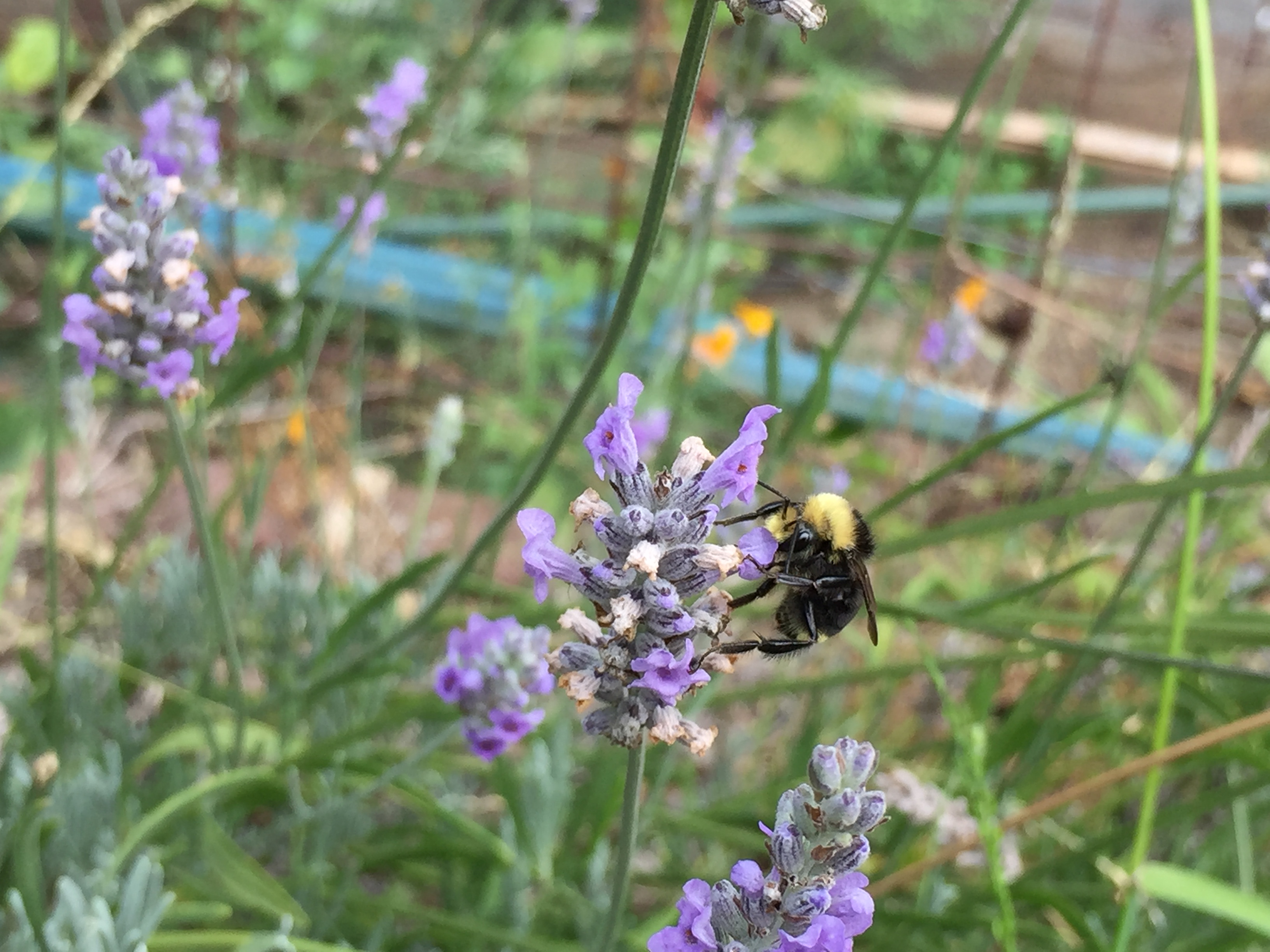Urban farming
Even in a city, a wildlife haven might be just around the corner. In urban gardens throughout Santa Cruz, the Monterey Bay Area, and Santa Clara County, Stacy Philpott, professor and director of the Center for Agroecology & Sustainable Food Systems, has cataloged a wealth of species, at least 60 types of bees, 25 of spiders, 18 of ladybugs, and about 60 of birds.

Philpott and her research group study how differences in urban gardens, like their “messiness” and the number and types of nearby trees and shrubs, affect their biodiversity. In general, the group finds that what’s good for biodiversity is good for human gardeners too. Their experiments suggest that gardens with more biodiversity have more effective pollination and natural pest control.

Right: In a "tidy" garden—also in Monterey, while wood chip mulching might look nice, it can discourage nesting by bumblebees and visits by other pollinators. But it could attract other beneficial arthropods, like spiders. Credit: Stacy Philpott, with permission.
It’s also clear that urban gardens can be invaluable to the people who use them. Surveys of community members who work these gardens show that many garden as a way to spend time outdoors, relieve stress, and hang out with their families. For some, having access to a space to grow produce provides a vital way to put food on the table. A substantial number of lower-income gardeners surveyed experience some food insecurity, Philpott said. ”There's a lot of demand for space in cities and many interests competing for its use,” Philpott said. “Our research shows that gardens are important spaces.”

